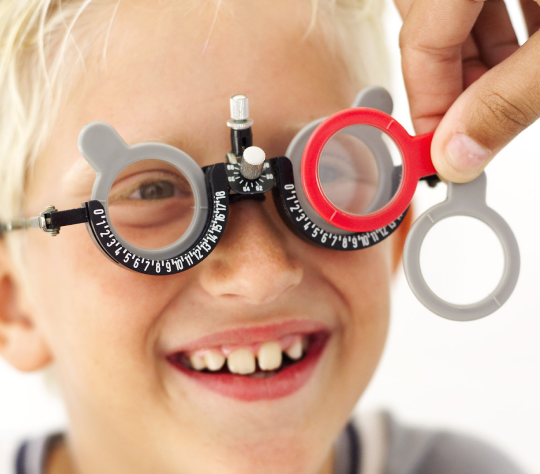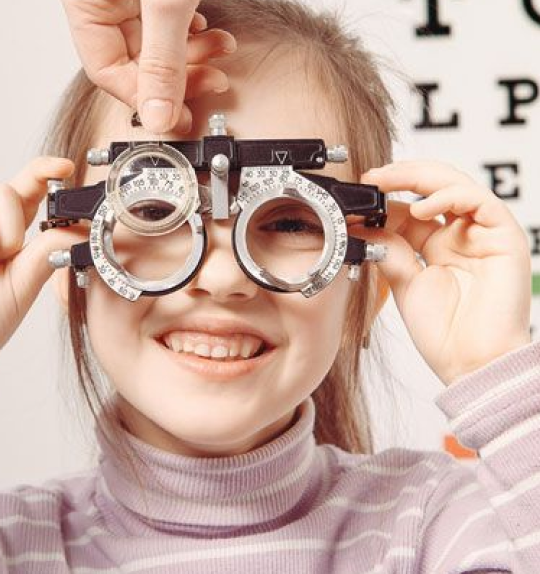
In this article, we’ll explain how issues with our vision can result in symptoms of ADHD and learning and reading comprehension difficulties in both children and adults.


Is it your eyes?
What is ADHD?
ADHD, also known as Attention-Deficit/Hyperactivity Disorder, is a chronic condition including attention difficulty, hyperactivity, and impulsiveness. While children and adults who have ADHD have normal intelligence, ADHD is considered a brain-based disorder.
ADD (Attention Deficit Disorder) is a type of ADHD which tends to exclude the consistent movement.
ADHD and learning and reading difficulties often go hand-in-hand (as do ADD and learning/reading issues).
Symptoms of ADHD
Common symptoms associated with problems with vision and ADHD include:
- Difficulty with reading and writing
- Covering one eye while reading
- Trouble sitting still or focusing during class and homework
- Can only focus for several minutes at a time before becoming distracted
- Performs poorly on tests, despite knowing the material
- Skips lines while reading
- Frequently loses place while reading
- Develops anxiety about school and assignments
- Becomes tired from school and assignments
Could ADHD and Reading and Learning Difficulties Be Connected To Vision Problems?
Yes, ADHD and reading and learning problems could be directly connected to your vision. Oftentimes, what people do not know is that their ADHD (and the symptoms associated with it) could all be the direct result of an issue with their eye misalignment, a condition known as Binocular Vision Dysfunction.
Binocular Vision Dysfunction (also known as BVD) is a condition where the two eyes have a difficult time working together to help the brain create one clear image. The result is image misalignment. The body attempts to correct this vision misalignment by overusing and severely straining the eye muscles.
When we have normal binocular vision, our eyes work together with the brain to create one clear image. But when we have Binocular Vision Dysfunction, our eyes do not work together, which makes it incredibly difficult for our brain to create a single clear image.
BVD can actually be a very subtle misalignment between the eyes. In many cases, a regular eye doctor might not notice any misalignment or issue, making it difficult to diagnose. But as you can imagine, if our eyes are misaligned by even the smallest degree, this can lead to headaches and dizziness while reading (as well as a handful of other unpleasant symptoms), and cause us to avoid reading activities altogether.

What Causes BVD?
As mentioned, BVD can be caused due to one eye being physically higher than the other, which is usually a very subtle difference. It can also be caused by a nerve or eye muscle abnormality, which is something many people are born with. As people with these abnormalities get older, the eye muscles become even more strained from trying to constantly realign the image they are sending to the brain, which results in the uncomfortable symptoms of BVD.
Stroke, concussion / brain injury, inner ear abnormality/injury, or certain neurological disorders can also cause BVD.
Adults and children of all ages can experience the debilitating effects of BVD. Depending on the age, behaviors and symptoms will vary.
What are the Symptoms of BVD?
The symptoms of BVD can be identical to the symptoms of ADHD, which is why this disorder can sometimes be misdiagnosed. Ultimately, the symptoms can lead to severe issues with ADHD and learning and reading comprehension, and therefore overall development.
For children ages 4 to 8-years-old, common behaviors and symptoms of Binocular Vision Dysfunction can include:
- Poor handwriting (poor spacing, writing letters too big or small)
- Difficulty reading
- Avoiding activities
- Playing with toys very close to their face
- Sitting close to the TV
- Difficulty identifying shapes, colors and numbers that are age-appropriate
- Difficulty seeing the class board
- Frequently bumping into objects
- Difficulty catching balls
- Stomach aches and headaches at school or away from home
- Light sensitivity
- Covering one eye to see
- Anxiety in public places
- Frequent squinting in order to see

Find out if your 4 to 8-year-old has Binocular Vision Dysfunction
For children ages 9 to 13-years-old, common behaviors and symptoms of Binocular Vision Dysfunction can include:
- Repeatedly bumping into things while walking
- Having difficulty completing homework due to headaches and nausea
- Repeatedly reading the same things over and over / difficulty with reading comprehension
- Sensitivity to bright lights
- Closing one eye to make it easier to see
- Blurred vision when using the computer
- Blurred vision or tired eyes when looking at the blackboard in class
- Verbal skills that are ahead of reading skills
- Frequent blinking

Find out if your 9 to 13-year-old has Binocular Vision Dysfunction
For young adults and adults (ages 14-years-old and older) common behaviors and symptoms of Binocular Vision Dysfunction can include:
- Headaches
- Difficulty reading and learning
- Problems focusing in school and at home
- Dizziness
- Nausea
- Anxiety
- Sensitivity to light
- Difficulty with balance / unsteady walking
- Pain in the neck
- Frequent head tilt
- Motion sickness

Find out if you or your young adult has Binocular Vision Dysfunction
Regardless of which age someone is suffering from dyslexia and ADHD and vision problems that are caused by BVD, it’s never too late to receive treatment.
ADHD and Learning Difficulties in Children
Up to 50 percent of children with ADHD/ADD could actually be suffering from BVD. And when children experience ADHD symptoms, it can drastically delay their development. After all, it’s very hard for them to maintain their focus if they experience headaches or dizziness every time they try to read in class or do their homework. To eliminate the symptoms, they’ll look out a window, look around the classroom, or try to avoid the reading activity altogether.
Additionally, vision screening services at schools will only check to find out how well your child’s eyes can see at distance, but minor eye misalignments that characterize BVD are not tested. As a parent, it helps to know that the symptoms of BVD and ADHD significantly overlap.
It’s important for children to receive treatment for BVD early on (if this is the cause of their symptoms) to prevent a delay in learning. The best place to start is with a NeuroVisual Examination to find out if BVD is the cause of their learning and reading difficulties.

Get Treatment For Learning Issues, ADHD, and Reading Difficulties
If you or your child struggles with the symptoms associated with ADHD, there is treatment available in the form of specialized aligning lenses.
Here’s how they work: Specialized aligning lenses use micro-prisms to realign the images that the eyes see, allowing the brain to create one clear image, and eliminating the constant struggling of the eyes to realign vision. This enables the eye muscles to relax, releasing the tension and providing relief from difficulty focusing or reading, headaches, and any other symptoms.
To determine if you or your child’s ADHD and reading issues (or ADD and reading difficulties) are a result of BVD, our compassionate doctors at Vision Specialists of Michigan will complete a thorough NeuroVisual Examination to find the extent of the vision misalignment. If BVD is suspected to be the cause, a pair of specialized eyeglasses will be prescribed that will help the eyes work as a team for improved vision.
Treatment is simple and immediately effective.
To schedule an appointment, call (248) 258 – 9000 and receive relief.










